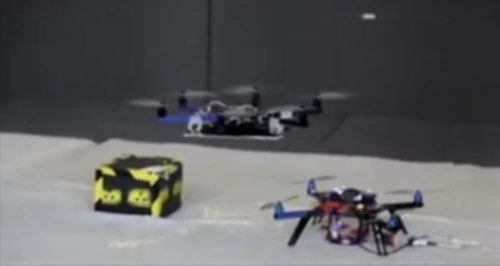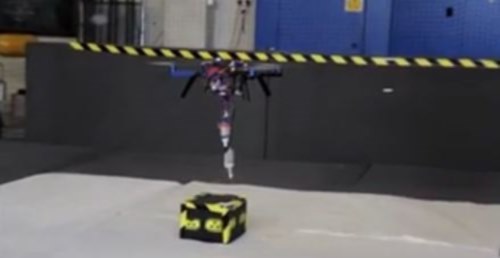Drones and 3D printing have become a big hit in the tech world. Now, scientists from the Imperial College London have combined the two technologies into one — voila, you have yourself a flying 3D printer.

Image via New Scientist, YouTube
Mirko Kovac and his team set out to develop an aerial robot that could autonomously create structures. The quadcopter the team came up with is equipped with chemicals that create polyurethane when mixed, as well as a printing module.
Take a peek. Watch the robot hover, then lower its arm to squirt foam to create a structure.
How it works
First, directional coordinates are programmed into the flying robot. Then the installed GPS navigates the quadcopter to its target. Finally, the drone lands, does whatever job it set out to do, and waits for the foam to dry, then picks it up and carries it away.
So, who really needs a flying 3D-printer anyway?

Image via New Scientist, YouTube
You may not really need one of these for personal use, but the quadcopter was created with radioactive waste in mind. For example, if the box contained radioactive waste, this would be a safe way to remove it from nuclear sites or even patch up damage to buildings. The team also tested versions that carried hacked Kinect cameras to inspect the environment and determine where to land.
The future of the flying 3D-printer
The drone can carry about 5.5 lbs, but the Imperial College London group is working on a version that can carry almost 90 lbs.
Currently, this robot is powered by a regular battery source, but Kovac envisions a type of fuel cell power source where the robotic contraption could recharge by resting on a tree top and rolling out solar panels.
Story and video via New Scientist.
Advertisement
Learn more about Electronic Products Magazine





